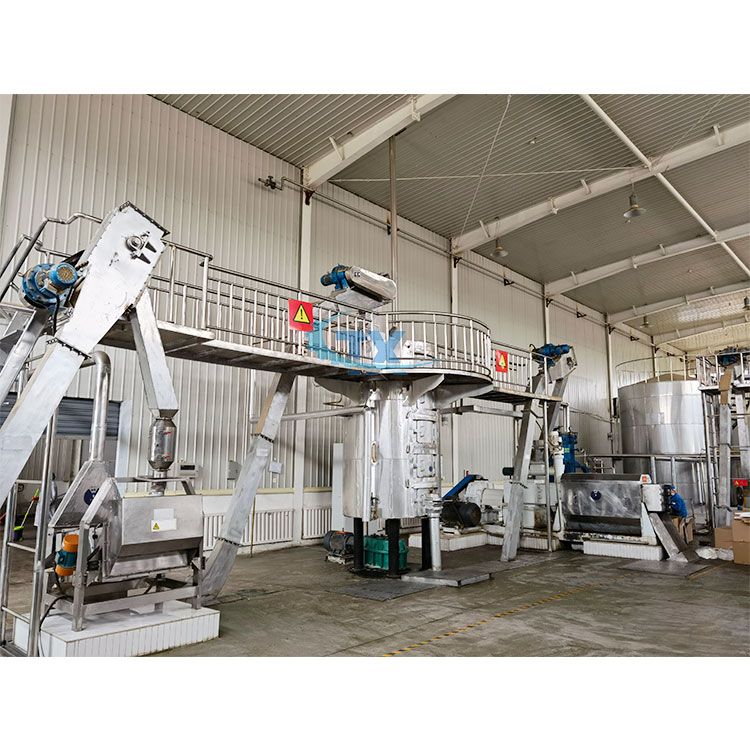
In the realm of small and medium-sized oil mills, mastering the temperature control techniques of screw oil presses is crucial for enhancing oil quality and extraction efficiency. This article delves into the key aspects of temperature management for the ZY24 (202 - 3) continuous oil press, offering practical solutions to common problems.
The moisture content of raw materials significantly affects the temperature control during the oil extraction process. For example, when the moisture content of rapeseeds is around 8% - 10%, it is more conducive to temperature control and oil extraction. If the moisture is too high, it will increase the heat capacity of the raw materials, making it difficult to reach the optimal pressing temperature quickly. On the contrary, if the moisture is too low, it may cause uneven heating and affect the oil quality.

Different oilseeds have different optimal pressing temperature ranges. For rapeseeds, the optimal pressing temperature is between 110°C - 120°C. At this temperature, the oil yield can reach about 38% - 42%. For peanuts, the optimal temperature is around 120°C - 130°C, and the oil yield can be up to 45% - 50%. Sunflower seeds require a temperature of 100°C - 110°C for better oil extraction, with an oil yield of approximately 35% - 40%.
| Oilseeds | Optimal Pressing Temperature (°C) | Average Oil Yield (%) |
|---|---|---|
| Rapeseeds | 110 - 120 | 38 - 42 |
| Peanuts | 120 - 130 | 45 - 50 |
| Sunflower seeds | 100 - 110 | 35 - 40 |
During the operation of the ZY24 (202 - 3) oil press, the temperature rise follows a certain pattern. In the initial stage, the temperature rises relatively slowly as the raw materials start to be compressed. As the pressing progresses, the temperature rises more rapidly. It is necessary to monitor the temperature in real - time and adjust the feeding speed and pressure to control the temperature rise. For example, if the temperature rises too fast, reducing the feeding speed can slow down the heat generation.

In some small oil mills, incorrect temperature control operations have led to problems such as reduced oil quality and increased energy consumption. For instance, a mill once pressed peanuts at a temperature of over 140°C for a long time. As a result, the oil had a burnt smell, and the acid value increased significantly, which affected the marketability of the oil. At the same time, the high temperature also increased the energy consumption of the equipment.
Temperature does not act alone but works in synergy with other parameters such as rotation speed and gap between pressing bars. When the rotation speed is too high, it will generate more heat, which requires more precise temperature control. Similarly, the gap between the pressing bars affects the pressure and friction during pressing, which in turn impacts the temperature. Therefore, adjusting these parameters in a coordinated manner is essential for efficient and high - quality oil extraction.
Here are some clear operation guidelines: First, strictly control the moisture content of raw materials according to the type of oilseeds. Second, set the initial temperature and gradually adjust it according to the actual pressing situation. Third, regularly check the equipment's temperature sensors and other control components to ensure their normal operation.
Common mistakes include ignoring the impact of raw material moisture on temperature, over - relying on high - temperature pressing to increase oil yield, and failing to adjust other parameters in conjunction with temperature changes. Avoiding these mistakes can significantly improve the performance of the oil press.

In conclusion, mastering the temperature control techniques of the ZY24 (202 - 3) screw oil press is the key to solving the problems of low oil yield and high energy consumption in small and medium - sized oil mills. By following the above - mentioned guidelines and avoiding common mistakes, you can achieve efficient and stable production.
立即咨询ZY24(202-3)螺旋榨油机技术方案,获取专属压榨优化指南 Click here to consult the technical solution of the ZY24 (202 - 3) screw oil press and get an exclusive pressing optimization guide!

